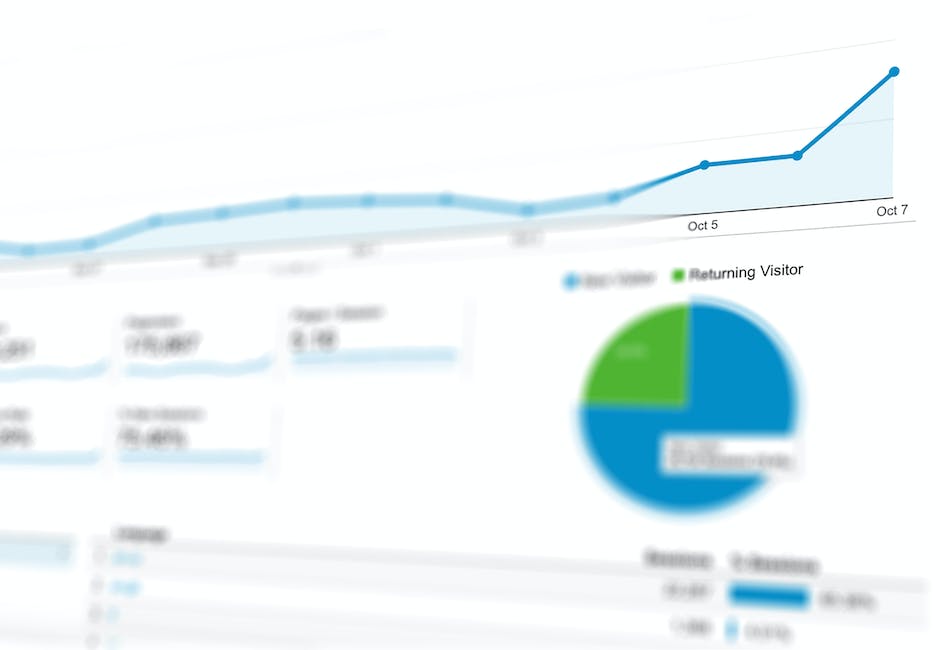In today’s tech-driven world, the importance of data analytics cannot be overstated. Data drives decisions in every industry, from healthcare to finance, and understanding how to analyze this data is a vital skill. This guide will provide an overview of data analytics projects, from understanding what they are and why they’re important, to the different types that exist. Whether you’re a seasoned data analyst or a beginner in the field, this post will provide you with valuable insights into the world of data analytics projects.
Are you ready to dive into the fascinating world of data analytics projects? Let’s get started!

Understanding Data Analytics: What it is and why it’s important
Data analytics is a process of inspecting, cleaning, transforming and modeling data with the goal of discovering useful information, drawing conclusions and supporting decision-making. In today’s data-driven world, it plays a pivotal role in helping businesses make informed decisions, predict trends, and improve processes. From understanding customer behavior to predicting market trends, data analytics provides insights that can drive strategic business decisions.
With the tech industry becoming increasingly data-centric, having skills in data analytics has become a significant advantage in the job market. The ability to analyze and interpret data can set you apart in a sea of applicants and open up a wide range of career opportunities.
The Different Types of Data Analytics Projects
There are various types of data analytics projects, each with a unique purpose and application. Understanding these types can help you choose the right approach for your specific needs.
Predictive analytics projects involve using historical data to predict future events. This type of project is commonly used in industries such as finance and insurance, where predicting future outcomes can have significant impacts on business decisions.
Prescriptive analytics projects, on the other hand, not only predict future outcomes but also suggest actions to benefit from those predictions. This type of data analytics is particularly useful in areas like logistics and supply chain management.
Descriptive analytics projects involve analyzing historical data to understand what has happened in the past. This can help businesses understand their past performance and make informed decisions about the future.
Finally, diagnostic analytics projects aim to understand why something happened. It digs deeper into data to understand the cause of a particular outcome. This type of analysis is often used in fields like healthcare and crime investigation.
Understanding these types of data analytics projects can help you choose the right approach for your specific needs and make the most of the data at your disposal.
Approaching Data Analytics Projects: A Step-By-Step Guide
When tackling data analytics projects, having a systematic approach can significantly enhance your efficiency and outcomes. This process can be broken down into several stages, each with its unique focus and requirements. Let’s walk through these stages step by step.
Identifying the Problem
The first and arguably most critical step in any data analytics project is identifying the problem. What question are you trying to answer? What issue are you attempting to resolve? The ability to clearly define and understand the problem sets the foundation for the entire project. It will guide the data you collect, how you analyze it, and even how you interpret the results. But how do you identify the problem? Start by understanding the needs of your organization or client, and then formulate a clear, concise question that your project will answer.
Gathering and Analyzing the Data
Once you have defined your problem, the next step is to gather the relevant data. This could involve collecting new data or utilizing existing data, depending on the nature of your project. You might be using quantitative data (like sales figures or website metrics) or qualitative data (like customer reviews or survey responses).
After gathering the data, you will need to analyze it. This often involves cleaning the data (removing errors or irrelevant information), exploring the data (identifying trends or patterns), and then performing more detailed analysis using statistical or machine learning techniques. There are various methods and tools available for analyzing data, and the ones you choose will depend on your specific problem and the type of data you are working with.
Interpreting the Results
After the analysis, it’s time to interpret the results. This step involves taking the outcomes of your analysis and translating them into actionable insights. These insights should directly address the problem you identified at the start of your project. But remember, data analysis is as much an art as it is a science. You will need to use your judgment and understanding of the context to draw meaningful conclusions from your results.
Interpreting the results also involves communicating these insights effectively to others. This could be through visualizations, reports, or presentations. Remember, the goal is not just to present the results, but to tell a story that others in your organization or team can understand and act upon.
Practical Skills Needed in Handling Data Analytics Projects
When it comes to handling data analytics projects, certain skills stand out as being particularly important. These skills can be broadly divided into two categories: technical skills and soft skills.
Technical skills are those that directly relate to the process of analyzing data. For example, a strong understanding of programming languages such as Python or R is often required. These languages are commonly used in data analytics because they are powerful, versatile, and have a lot of libraries specifically designed for data analysis.
Additionally, a solid foundation in statistics is required. This is because data analytics often involves interpreting complex datasets, and statistical knowledge is necessary to understand and draw conclusions from these datasets. Knowledge of machine learning algorithms can also be a significant advantage, allowing you to make predictions or decisions based on data.
Soft skills, on the other hand, are those that pertain to how you work and interact with others. Critical thinking is one such soft skill that is invaluable in data analytics. It allows you to make reasoned judgments that are logical and well thought out. It’s not just about understanding the data, but also about figuring out the best way to approach the problem and finding the most effective solution.
Problem-solving abilities are also crucial. In data analytics, you’ll often face challenges that require innovative solutions. Being able to think outside the box and come up with effective solutions is a valuable skill to have.
Tools and Software for Data Analytics Projects
There are numerous tools and software available that can assist you in your data analytics projects. These range from basic tools like Excel for simple data analysis tasks, to more complex tools like SQL for database management and querying, and Tableau for data visualization.
Excel is a commonly used tool in data analysis because of its simplicity and flexibility. It’s great for organizing, sorting, and cleaning up data. It also has built-in functions for statistical analysis.
SQL, or Structured Query Language, is used for managing and manipulating databases. It allows you to query a database to extract the specific data you need for your analysis.
Tableau is a powerful data visualization tool. It allows you to create interactive dashboards and reports that make it easier to understand and present your data.
There are also a number of programming libraries that are designed specifically for data analysis. For example, Python has pandas for data manipulation and analysis, NumPy for numerical computation, and Matplotlib for data visualization.
Finally, it’s important to remember that while these tools and software can greatly aid in your data analytics projects, they are just tools. The real key to successful data analytics lies in your understanding of the data and your ability to use these tools effectively.

Real-Life Examples of Data Analytics Projects
Have you ever wondered how data analytics projects are applied in the real world? Let’s take a look at some examples that highlight the broad applications of data analytics across various fields.
Netflix, the popular streaming service, uses data analytics to provide personalized recommendations for its users. It collects data about users’ viewing habits, genres they like, and the time they spend watching to create a unique profile for each user. This profile is then used to suggest shows and movies that the user might enjoy.
In the healthcare sector, data analytics plays a pivotal role in predicting patient outcomes and improving healthcare delivery. For instance, Google’s DeepMind Health project uses machine learning to analyze medical images collected from NHS patients to detect early signs of eye disease and prevent potential blindness.
Even in sports, data analytics is making an impact. The use of sports analytics in baseball, famously known as Sabermetrics, has changed the way teams are built and games are played. By analyzing players’ performance data, teams can make informed decisions about which players to recruit and how to strategize their game plan.
Getting Started with Your Own Data Analytics Projects
Feeling inspired to start your own data analytics project? Here are some practical tips and resources to get you started.
Firstly, identify a problem that you are interested in solving. This could be anything from predicting house prices based on various factors, analyzing social media sentiment, or even studying climate change patterns. Remember, the key is in the question you want to answer with your data.
Once you have your problem, start collecting relevant data. You can find numerous open source datasets online on platforms like Kaggle, UCI Machine Learning Repository, and Google Dataset Search.
Finally, choose the right tools for your project. Depending on your project, you might need a simple tool like Excel or something more advanced like Python, R, or Tableau. Don’t forget to interpret your results and share your findings!
Preparing for a Career in Data Analytics
Working on data analytics projects is a great way to prepare for a career in this field. Not only does it help you understand the practical applications of data analytics, but it also equips you with the necessary skills that employers are looking for.
When applying for jobs, highlight your projects and the impact they had. This will show your potential employers that you can apply your skills to real-world problems.
Don’t forget the importance of continuous learning in this ever-evolving field. Stay updated with the latest trends and tools in data analytics. Consider taking up certification courses or attending webinars and workshops to enhance your knowledge and skills.
Remember, the world of data analytics is vast and full of opportunities. So, don’t be afraid to explore, experiment and learn. Who knows, maybe your next data analytics project could revolutionize an industry!
